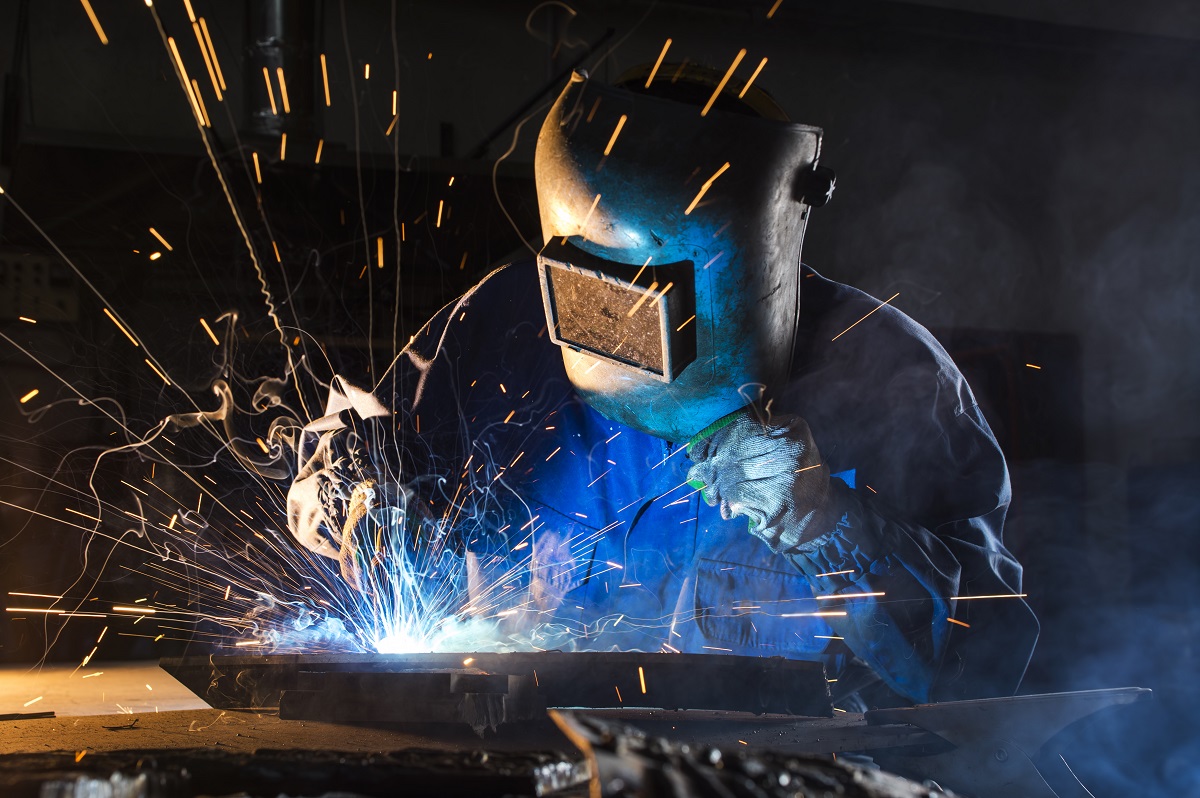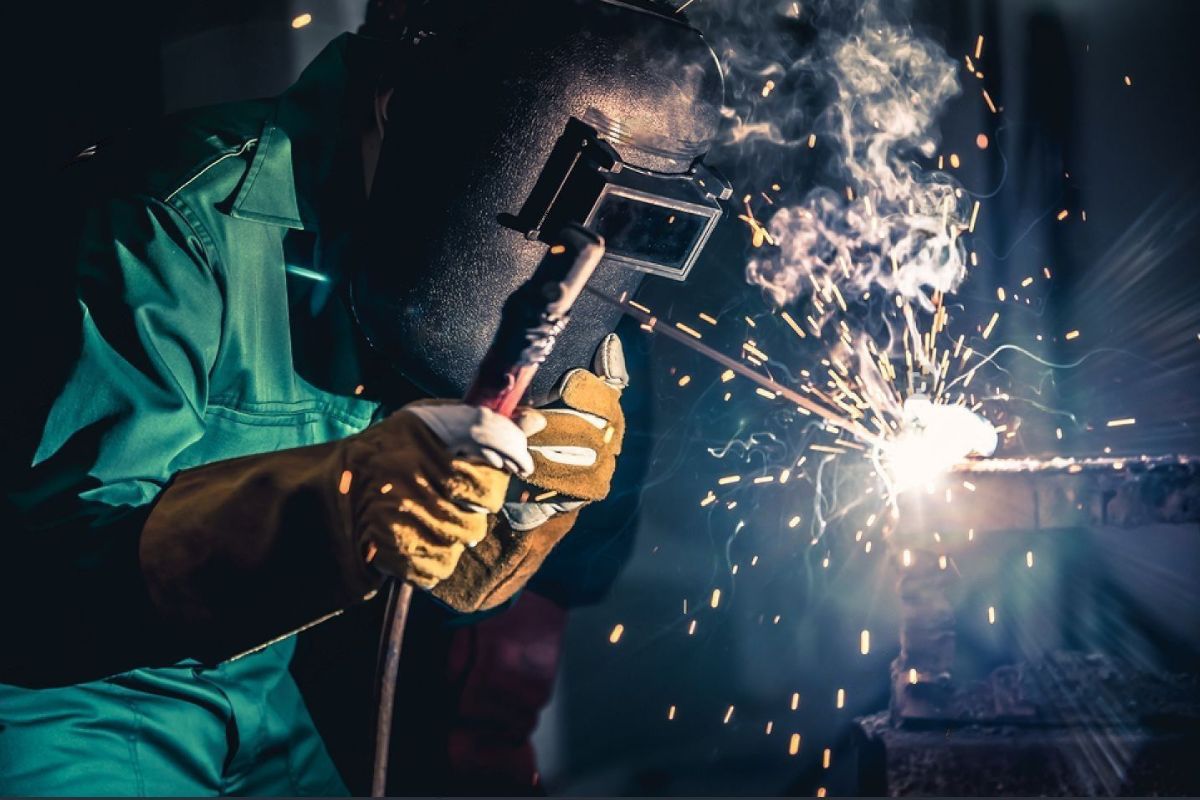All About Welding: Key Insights Into Techniques and Ideal Practices for Success
Welding encompasses a variety of methods, each suited for specific products and applications. Comprehending these methods, such as GMAW, SMAW, and TIG, is essential for accomplishing optimal outcomes. Moreover, the appropriate devices and security methods can not be ignored. As prep work and troubleshooting play important roles in the welding procedure, grasping these components can significantly improve the quality of the final item. What are the crucial aspects that ensure a successful weld?
Understanding Various Welding Methods
Welding techniques encompass a selection of techniques, each matched to certain applications and materials. Among one of the most usual techniques are Gas Metal Arc Welding (GMAW), Secured Metal Arc Welding (SMAW), and Tungsten Inert Gas Welding (TIG) GMAW, also called MIG welding, is preferred for its rate and convenience, making it perfect for slim products. SMAW, or stick welding, is preferred for its simpleness and performance in exterior atmospheres, especially with thicker steels. TIG welding offers accuracy and control, making it appropriate for detailed work and non-ferrous metals (Montana Mobile Welding and Repair Fabrication). Each technique has its unique advantages and considerations, permitting welders to select the most effective approach based on the task's requirements, product type, and wanted results. Recognizing these strategies is essential for successful welding
Vital Welding Tools and Tools
While different welding techniques call for details skills, the best equipment and tools are equally vital for accomplishing top quality outcomes. Essential welding devices includes welding machines, which vary depending on the method-- such as MIG, TIG, or stick welding. Protective gear, including headgears, gloves, and aprons, assurances security and comfort throughout the process. In addition, components and clamps aid protect materials in position, making certain accuracy in welds. Consumables like welding rods, cable, and shielding gas are additionally essential parts that affect the quality of the weld. Additionally, devices such as mills and cutters facilitate surface preparation and post-weld finishing, adding to a specialist result. Spending in high-grade equipment inevitably boosts the effectiveness and effectiveness of welding projects.
Security Practices in Welding
Proper security methods are necessary in the welding market to shield employees from potential threats. Welders have to put on ideal personal protective tools (PPE), including headgears with correct shading, handwear covers, and flame-resistant garments. Sufficient air flow is important to reduce direct exposure to unsafe fumes and gases generated throughout the welding procedure. In addition, employees ought to be educated in the appropriate handling of welding devices to stop mishaps. Fire security measures, such as maintaining combustible materials far from the welding location and having fire extinguishers conveniently available, are essential. Regular assessments of tools and offices can help recognize prospective risks before they bring about accidents. By sticking to these safety and security techniques, welders can create a more secure working setting and reduce threats linked with their trade.
Readying Materials for Welding
Preparing materials for welding is an important action that considerably affects the quality and stability of the end product (Montana Mobile Welding and Repair Welding). Correct preparation includes cleaning the surface areas to eliminate pollutants such as oil, rust, and dust, which can jeopardize the weld. Strategies such as grinding, fining sand, or using solvents are generally employed to achieve a tidy surface. In addition, making certain that the products fit with each other snugly is necessary; voids can bring about weak welds. It's also important to think about the alignment and positioning of the elements, as this will impact the ease of welding and the last end result. Choosing the ideal filler material and making certain compatibility with the base steels is necessary for achieving strong, long lasting welds.
Tips for Getting High-Quality Welds
Attaining high-grade welds calls for focus to information and adherence to finest techniques throughout the welding procedure. Proper joint prep work is important, making certain surfaces are tidy and totally free from impurities. Choosing the ideal filler material and welding method based upon the base metals is vital for optimal bonding. Maintaining consistent traveling speed and angle while welding can promote and prevent flaws harmony. Additionally, controlling warm input is important; extreme warm can result in warping and deteriorated joints. If essential, frequently examining the learn the facts here now welds during the process enables for instant changes. Ultimately, employing suitable post-weld treatments, such as cleaning and tension relief, can improve the resilience and honesty of the weld, inevitably ensuring a successful end result.
Troubleshooting Typical Welding Issues
Welding usually offers obstacles that can affect the quality and integrity of the end product. Common concerns such as porosity, irregular weld beads, and getting too hot can emerge, each requiring details troubleshooting techniques. Understanding these problems is essential for welders to enhance their abilities and achieve ideal results.
Porosity Troubles Clarified
Porosity can frequently be overlooked, it stays an important issue in welding that can endanger the honesty of a completed item. Porosity refers to the visibility of small gas pockets within the weld bead, which can weaken the joint and lead to premature failure. This trouble normally occurs from impurities, wetness, or incorrect shielding gas insurance coverage throughout the welding procedure. To reduce porosity, welders ought to confirm that the base products are tidy and dry, make use of proper protecting gases, and preserve regular welding specifications. Frequently evaluating the equipment and environment can likewise aid recognize possible concerns prior to they materialize in the weld. Addressing porosity successfully is essential for attaining strong, long lasting welds that meet quality standards.

Inconsistent Weld Beans
Irregular weld grains can considerably affect the high quality and stamina of a finished item. Numerous aspects add to this problem, consisting of incorrect travel rate, incorrect amperage setups, and inconsistent electrode angles. When the welder relocates also swiftly, a bead might appear narrow and lack infiltration, while relocating as well gradually can create excessive accumulation. Additionally, using the incorrect amperage can lead to either damaging or extreme spatter, both of which concession weld honesty. The welder's method, such view publisher site as irregular lantern movement, can also lead to uneven grain appearance. To mitigate these problems, welders must concentrate on preserving constant, controlled movements and making certain appropriate equipment setups to achieve harmony in their welds. Uniformity is essential to accomplishing solid and trusted welds.
Getting Too Hot and Warping Issues
Excessive warm during the welding procedure can bring about significant getting too hot and buckling issues, influencing the architectural honesty of the work surface. These problems typically materialize as distortion, which can compromise alignment and fit-up, making more setting up testing. Aspects contributing to overheating consist of the selection of welding specifications, such as voltage and take a trip speed, along with the kind of product being bonded. To alleviate these concerns, welders ought to preserve consistent travel rate and appropriate warm input while checking the workpiece temperature. In addition, pre-heating or post-weld warmth treatment can aid alleviate anxieties triggered by fast cooling - Welding. Regular evaluation and adherence to finest practices are crucial in protecting against overheating and guaranteeing the durability and dependability of bonded frameworks
Frequently Asked Questions
What Are the Job Opportunities in the Welding Industry?
The welding sector supplies resource diverse profession chances, including settings as welders, engineers, educators, and inspectors. Specialists can operate in production, construction, aerospace, and automobile industries, gaining from solid need and affordable incomes in numerous functions.
Just How Can I Improve My Welding Speed Without Giving Up Quality?
To boost welding speed without giving up high quality, one ought to practice effective techniques, keep devices, maximize settings, and enhance hand-eye control. Regular training and looking for comments can additionally substantially add to accomplishing quicker, high-grade welds.
What Accreditations Are Readily Available for Welders?
Countless qualifications exist for welders, consisting of those from the American Welding Culture (AWS), the National Center for Construction Education And Learning and Research Study (NCCER), and numerous industry-specific organizations. These qualifications boost employability and show skill efficiency.
Exactly How Does Welding Impact the Qualities of Metals?
Welding influences the residential or commercial properties of steels by changing their microstructure, which can cause changes in firmness, ductility, and strength. Heat input and cooling rates throughout the procedure considerably impact these product features.
Can I Weld Dissimilar Metals Together?
